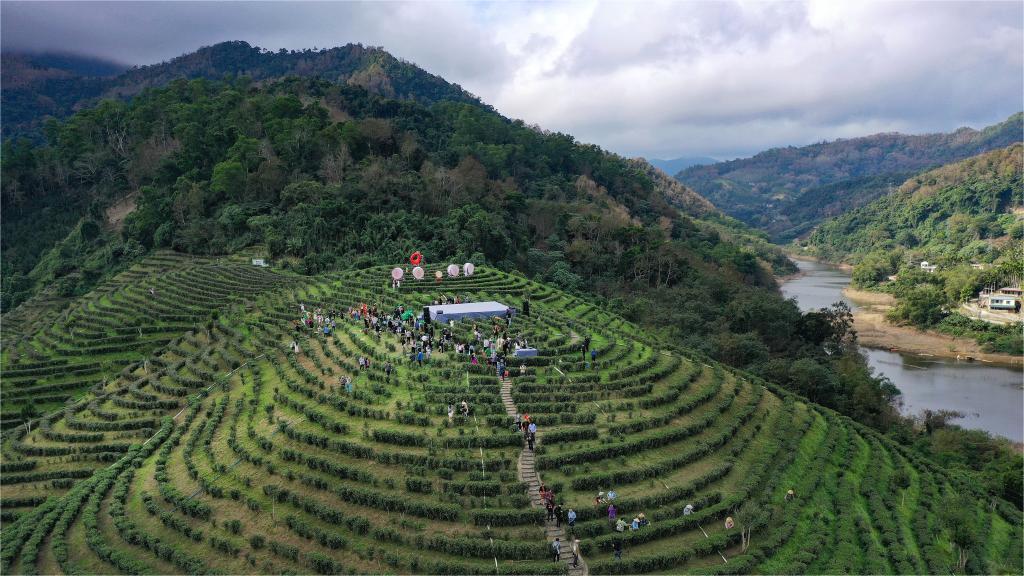Sand-ravaged city reaps economic, ecological benefits from green power generation
LANZHOU, Jan. 12 (Xinhua) -- On the edge of the Tengger Desert in the north of Gulang County in Wuwei City, northwest China's Gansu Province, a vast span of neatly aligned photovoltaic panels are glistening in the sunlight, adorning the desolate winter with a touch of bright blue.
The "blue oasis" belongs to the Gulang Zhenye 150 MW photovoltaic power generation project. Like other similar projects under construction in the desert area of Gulang, the project is restoring the desert while generating green power.
With solar farms in the desert and wind farms in the mountains, Gulang County, once a sand-ravaged area, has capitalized on its rich sunlight and wind resources and reaped both economic and ecological benefits from the green power industry.
"This land used to be a barren desert with no grass growing," said Chen Dawei, an executive with the Shaanxi xinhua water conservancy and hydropower investment company. With the advent of the photovoltaic power station, they have planted psammophyte under the shade of solar panels. Grass seeds were sowed, and grass grids were planted to stifle sand movements.
As photovoltaic modules block the baking sunlight and reduce the evaporation of surface water, an ecosystem conducive to the growth of vegetation has been created. The vegetation, in turn, helped compact desert soil and facilitate the growth of psammophyte.
The land of the solar farm, carpeted by clusters of caragana, haloxylon ammodendron, and hedysarum scoparium, now boasts a vegetation coverage rate of over 90 percent, according to Chen. As solar energy power generation is scaling up, ecological benefits are reaped as well.
Apart from solar energy, Gulang County has launched wind power projects in its mountainous areas in the south.
A wind farm of the Wuling Power Corporation Ltd. is situated at the foot of the Qilian Mountains, with an average altitude of 2,600 meters to 3,050 meters, hence rich in wind resources.
Since its 46 wind turbines were connected to the grid to generate electricity in September 2016, the wind farm has generated a total of approximately 1.7 billion kilowatt-hours of electricity.
The total installed capacity of the wind farm is 100 MW, and the average annual power generation stands at 224 million kilowatt-hours, said Huo Yuansheng, director of the wind farm, adding that the wind farm, each year, saves 74,100 tonnes of standard coal and reduces carbon dioxide emissions by 1,001 tonnes.
In recent years, Gulang County has been promoting the coordinated development of the upstream and downstream industries of wind power and solar energy power generation, and fostering a local industrial and supply chain centering on the new energy industry.
In the phase-one plant of the Jiayu Group, a high-tech company that began investing in Gulang in 2021, photovoltaic modules are rolling off the automated assembly line.
According to the company that also manufactures energy-saving doors, windows, and curtain walls, after the plant reaches its full production capacity in 2024, the annual sales revenue could reach 3.6 billion yuan (about 507 million U.S. dollars). The company is also expected to submit tax payments of over 50 million yuan annually, and offer 400 jobs to residents.
Photos
Related Stories
Copyright © 2024 People's Daily Online. All Rights Reserved.









